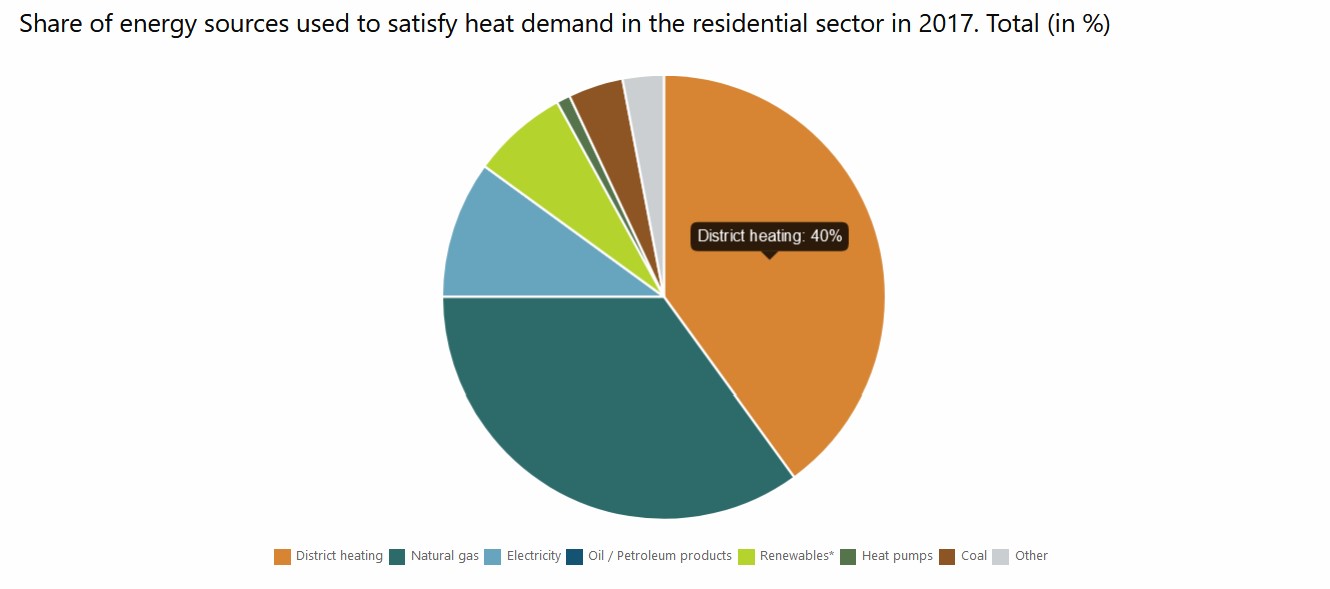
District heating is an important sector of the energy industry of the Czech Republic, providing heat to 1.7 million households and meeting a significant share of industrial heat demand. The Czech Republic is one of several countries with a traditionally high share of district heating systems. In the European context, with a household penetration level of 40%, the district heating system can be described as highly developed, although there is still considerable room for improvement, in terms of the distribution network and technology efficiency.
The district heating sector has faced many challenges in recent years, the most significant being a long term reduction in heat consumption. Industrial heat demand has decreased as a result of reduced heavy industry production and increased efficiency. Residential heat demand has decreased following improvements in energy conservation, in the form of thermal insulation of houses and the installation of measuring and control devices. These measures, combined with warm weather and higher prices have reduced consumption. The number of households disconnecting from district heating systems has also increased. In terms of the thermal energy supply to individual sectors, households (40%) lead, followed by industry (35%) and the services sector (25%).

Growing regulatory requirements, especially for environmental protection (emission limits, involvement in emission allowance trading), have had a significant impact on the heating sector. In addition, there is a need for investment in heating infrastructure or in recent years a decreasing price of electricity.
The Czech Republic’s main target is to reduce total greenhouse-gas emissions by 30 % by 2030 by comparison with 2005, equivalent to a reduction in emissions of 44 million tonnes CO2 eq. The Czech Republic proposes a 20.8 % contribution to the European target by 2030 – an increase of 7.8 percentage points by comparison with the Czech national target of 13.0 % for 2020. The average year-on-year growth of RES share in heating and cooling is proposed at 0.8 %. The aim of the Czech Republic is to reach primary energy sources at the level of 1 727 PJ in 2030, final consumption at the level of 990 PJ and energy intensity of GDP at the level of 0.157 MJ/CZK.
The increasingly, hot summers experienced in recent years present an argument for designers of new corporate and residential projects to install district cooling sources. Summer temperatures are likely to be higher and to remain high for longer in the future. This will increase the demand for cooling, meaning that the low operating costs of DC will make it increasingly economical when compared with electrical air conditioning. Some heating plants which can produce cold from waste heat in the form of cold water are also relying on this development.
District cooling production is cheaper than conventional air conditioning due to higher efficiency and use of waste heat from heating plants. However, it is still a marginal business for heating companies
If you would like to learn more, you can purchase the latest Country by Country Survey.
Useful links:
Association for District Heating of the Czech Republic